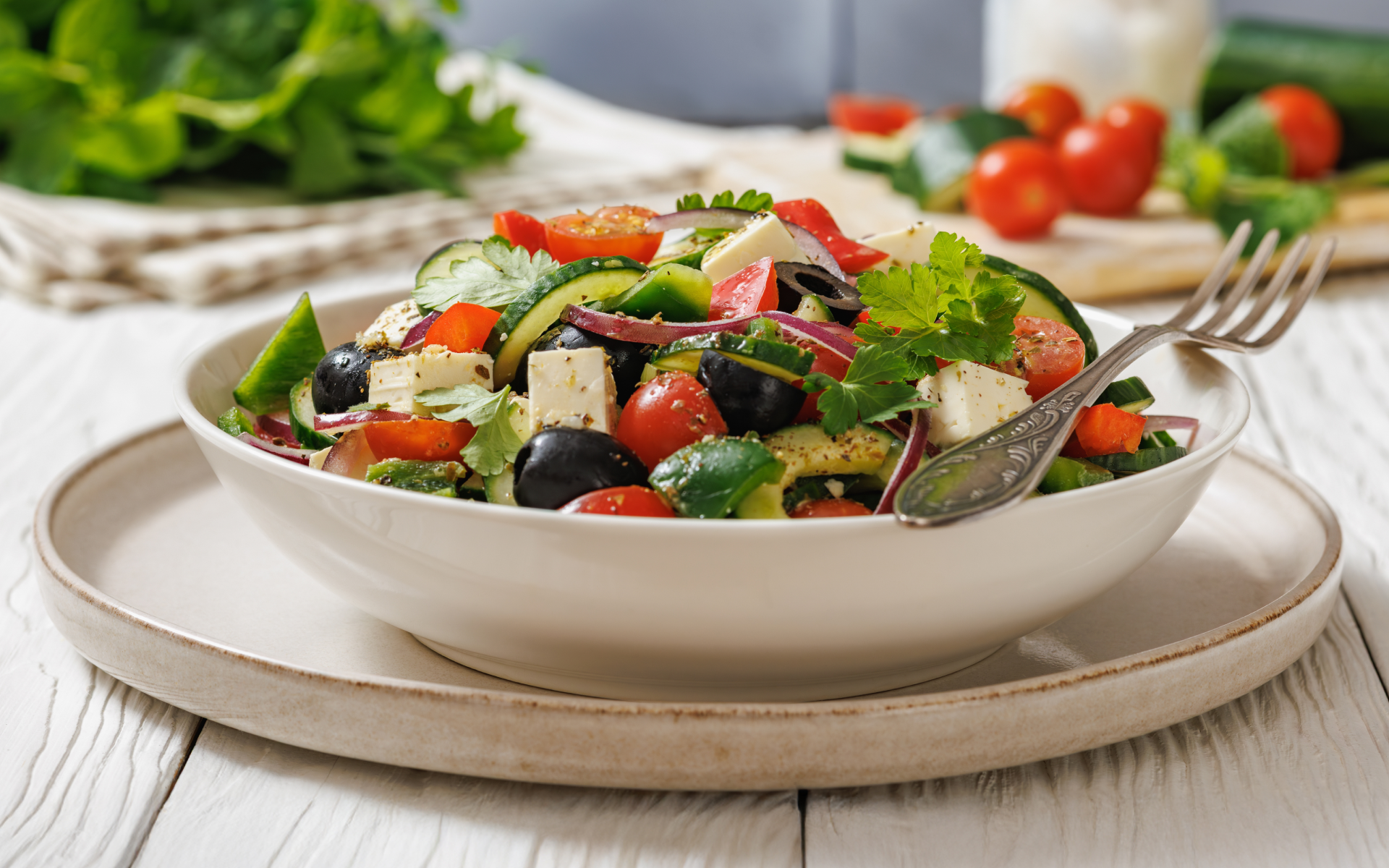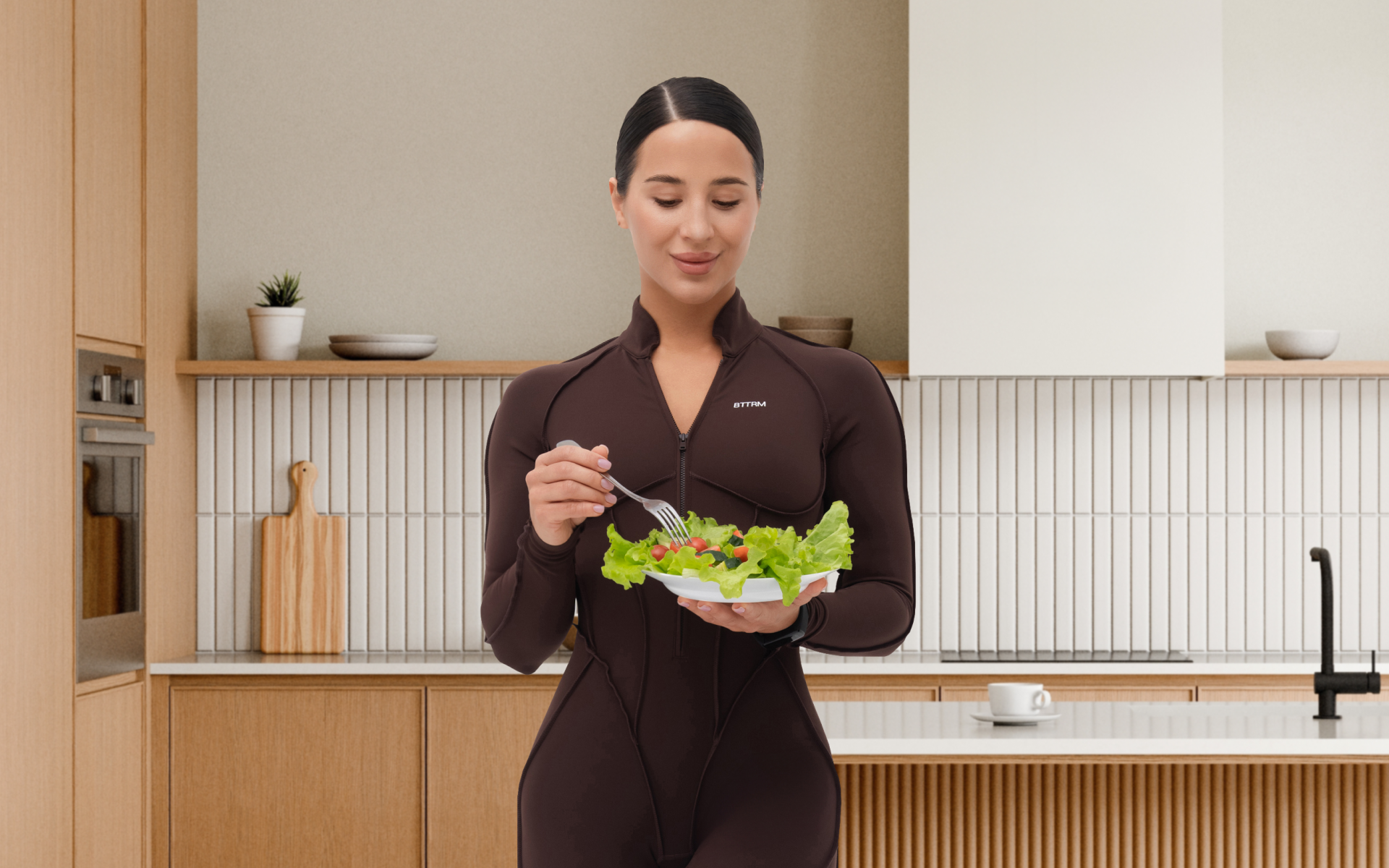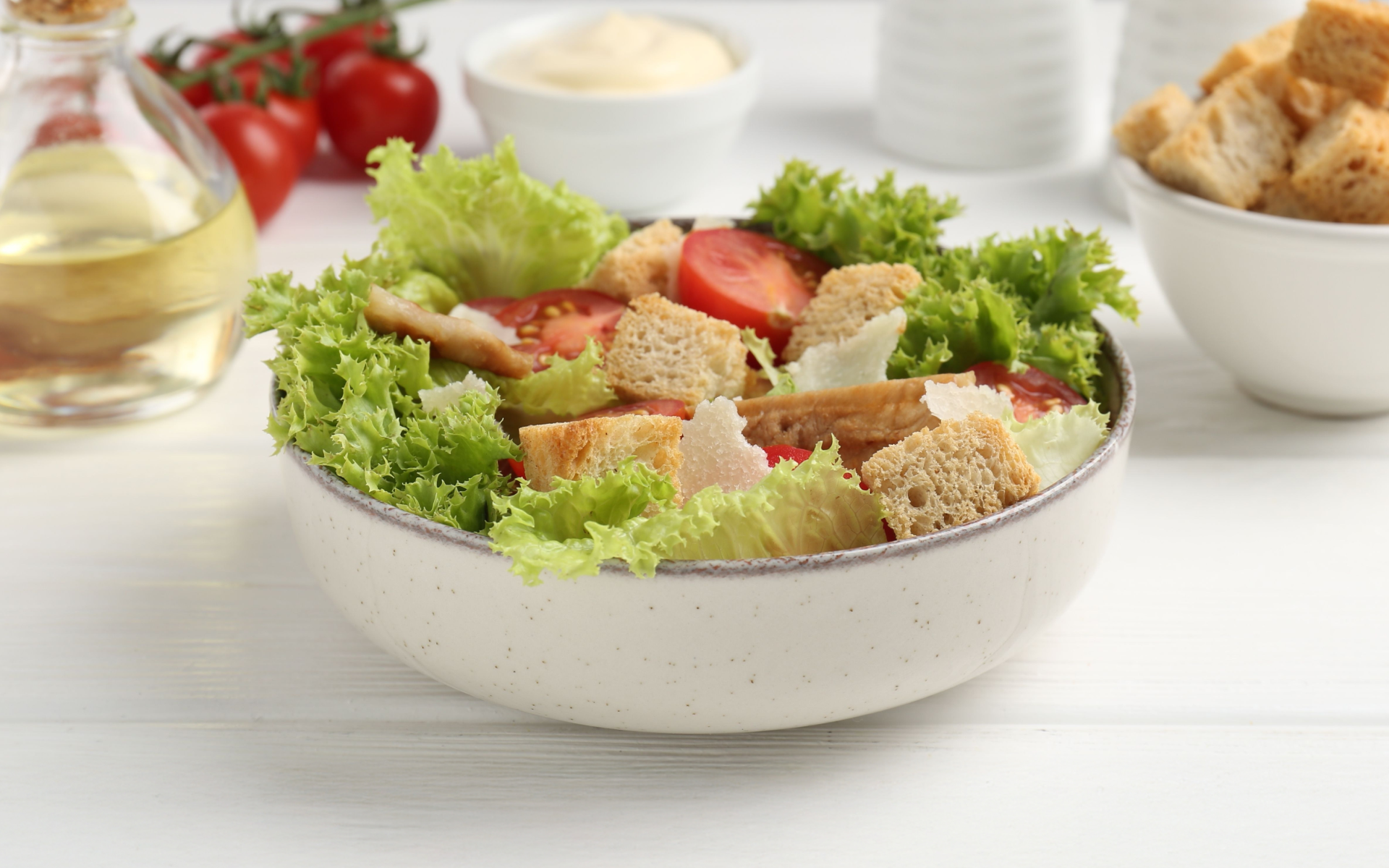Imagine this—you wake up in the morning feeling lighter, more energized, and ready to take on the day. Your meals contain colorful, fresh ingredients that make you feel good without ever making you feel deprived.
You enjoy the richness of roasted vegetables drizzled with olive oil, the heartiness of whole grains, and the occasional indulgence of a perfectly cooked piece of salmon or a juicy grilled chicken breast. There’s no guilt, no restriction—just balance.
This balancing effect is the essence of the flexitarian diet food list.
It’s not about choosing sides in the endless battle between plant-based and meat-based diets (1). It’s about the freedom to nourish your body with plant-based foods while leaving room for high-quality animal products when you crave them.
It’s for those who love eating more plants but don’t want to say goodbye to their favorite steak dinner forever. It’s for the foodie who wants to explore new flavors without committing to an all-or-nothing lifestyle.
The world of nutrition has tons of extremes, but flexitarianism is different.
It’s not a diet that comes with rigid rules or an expiration date—it’s a way of eating that adapts to your life, not the other way around.
Whether you’re here to improve your well-being, experiment with healthier meals, or reduce your environmental footprint without going entirely vegetarian, this way of eating welcomes you with open arms.
This article will break down the flexitarian diet food list, meal ideas, and everything you need to know to start this journey confidently. We’ll answer related questions, such as:
- What does a flexitarian eat?
- How does this approach compare to veganism?
- And what are the real benefits and drawbacks of flexitarianism?
What Are The Flexitarian Diet Rules?
If you’re considering stepping into the world of flexitarian eating, you might wonder:
“Are there any hard rules I need to follow?”
The beauty of this lifestyle is that it’s intentionally flexible. Unlike strict vegetarian or vegan diets, there are no black-and-white restrictions. Instead, it’s about shifting your focus toward plant-based foods while allowing meat and other animal products in moderation.
Here’s how you can approach the flexitarian diet food list with ease (2):
1. Prioritize Plant-Based Foods
The diet’s core revolves around fruits, vegetables, whole grains, legumes, nuts, and seeds. These foods provide essential nutrients like fiber, plant-based protein, vitamins, and minerals while naturally low in unhealthy fats.
2. Cut Back on Processed Foods
This diet doesn’t just encourage eating more plants—it also promotes eating real, whole foods. That means limiting processed snacks, sugary drinks, and heavily refined grains in favor of less processed, nutrient-dense options.
3. Treat Meat as a Side Dish, Not the Star
Instead of centering your meals around a large portion of meat, consider it an occasional addition.
A flexitarian plate might include:
- A small serving of grilled fish alongside a hearty quinoa salad
- A vegetable stir-fry with a bit of chicken for extra protein
When it comes to weight loss, progress is made by inches, not miles, so it’s much harder to track and a lot easier to give up. The BetterMe: Health Coaching app is your personal trainer, nutritionist, and support system all in one. Start using our app to stay on track and hold yourself accountable!
4. Opt for High-Quality Animal Products
Since you’ll be eating meat less frequently, it may be worth choosing the best quality possible if it’s in your budget.
If desired, you can look for:
- Wild-caught fish or sustainably farmed
- Organic poultry for antibiotic-free protein
- Grass-fed beef instead of conventionally raised
- Pasture-raised eggs and dairy for high-quality nutrition
5. Find Meat-Free Alternatives
On days when you skip meat, make sure you’re getting enough protein and variety.
Great alternatives include:
- Lentils and beans for a hearty, fiber-rich base
- Tofu and tempeh for a plant-based protein boost
- Mushrooms and jackfruit are satisfying, meaty textures.
- Nuts and seeds like almonds, walnuts, and chia for healthy fats
Flexitarian Eating In Action: A Sample Week
To help you visualize how this might work, here’s a quick breakdown of a typical flexitarian week:
| Day | Main Protein Source | Example Meal |
|---|---|---|
| Monday | Chickpeas | Chickpea and spinach curry with brown rice |
| Tuesday | Salmon | Grilled salmon with roasted vegetables |
| Wednesday | Tofu | Stir-fried tofu with broccoli and quinoa |
| Thursday | Chicken | Lemon herb chicken with a side of sweet potatoes |
| Friday | Lentils | Lentil soup with whole-grain bread |
| Saturday | Eggs | Avocado toast with poached eggs |
| Sunday | Beef (optional) | Grass-fed beef tacos with cabbage slaw |
As you can see, flexitarian eating isn’t about deprivation but variety and balance.
Some days are solely plant-based, while others incorporate small amounts of high-quality animal protein(2). The focus remains on nutrient-rich, minimally processed foods that energize and satisfy you.
This approach makes transitioning to a more plant-focused diet more manageable and sustainable in the long run—no drastic changes, no guilt—just a shift toward healthier eating.
Read more: Whole Food Meal Plan: A Healthy Guide For Beginners
Is Flexitarian Better Than Vegan?
If you’ve ever considered switching to a more plant-focused diet, you might have asked yourself:
Is a flexitarian diet better than a vegan diet?
The answer depends on what you’re looking for.
While both diets emphasize plant-based eating, they differ in their:
1. Flexibility vs. Strict Plant-Based Eating
- The flexitarian diet food list includes plant- and animal-based foods, giving you room to enjoy various meals without cutting out entire food groups.
- Veganism, on the other hand, eliminates all animal products, including meat, dairy, eggs, and even honey. This diet is a more rigid commitment that requires careful planning to meet all nutritional needs.
2. Nutritional Differences
- The benefits of a flexitarian diet include a well-rounded intake of essential nutrients. Since it allows animal products, it provides natural sources of vitamin B12, iron, and omega-3 fatty acids, which can sometimes be more challenging to obtain from a strictly plant-based diet.
- A vegan diet requires more effort to source these nutrients from fortified foods or supplements, especially for B12, which we find in animal products.
3. Which One Is Easier To Maintain?
- A flexitarian approach is more adaptable and can fit into various social and cultural settings. Dining out, cooking for a family, and traveling without stressing over food restrictions is easier.
- Veganism requires more dedication and planning, as eating out or attending gatherings may be more challenging, depending on food availability.
4. Environmental And Ethical Considerations (5)
- Both diets reduce reliance on industrial meat production, which benefits the environment. However, veganism has a lower carbon footprint since it eliminates all animal products.
- Ethically, veganism aligns with the idea of altogether avoiding harm to animals, while flexitarianism takes a moderate approach by reducing meat consumption without eliminating it.
So, Which Diet Is Right for You?
It comes down to personal preference and lifestyle.
If you want to eat primarily plants while keeping some flexibility, a flexitarian diet plan for weight loss and overall health might be the perfect fit.
If you’re motivated by ethical or environmental reasons and are ready for a more structured change, veganism might be the better option.
The good news? You don’t have to choose overnight. Many people start with a flexitarian approach and gradually reduce their animal product intake over time.
It’s not about perfection—it’s about progress.
What Does A Flexitarian Eat?
One of the most common questions about this lifestyle is:
What exactly does a flexitarian eat?
The answer is simple—primarily plant-based foods, with occasional animal products.
But unlike traditional versions, this is one of the types of vegetarian diets without strict rules about what’s off-limits. Instead, it encourages you to prioritize whole, nutritious foods while making mindful choices about when and how you consume animal products.
1. Plant-Based Staples
At the heart of the flexitarian diet food list are plant-based foods that provide essential vitamins, minerals, fiber, and antioxidants (4):
- Vegetables: Leafy greens, bell peppers, carrots, tomatoes, and cruciferous veggies like broccoli and cauliflower
- Fruits: Berries, apples, bananas, citrus fruits, and tropical options like mangoes and pineapples
- Legumes: Lentils, chickpeas, black beans, kidney beans, and peas
- Whole Grains: Quinoa, brown rice, farro, wheat bread, and oats
- Nuts and Seeds: Almonds, walnuts, chia seeds, flaxseeds, and pumpkin seeds
2. Animal-Based Foods (In Moderation)
Since flexitarianism allows for some animal products, you can include (5):
- Poultry & Lean Meats: Small chicken, turkey, or lean beef portions.
- Fish & Seafood: Salmon, tuna, shrimp, and sardines for omega-3s.
- Dairy & Eggs: Greek yogurt, cheese, milk, and eggs
3. Meat Substitutes And Alternatives
Many people on a flexitarian diet experiment with plant-based meat alternatives to cut back on animal products without sacrificing texture or flavor (5):
- Tofu and Tempeh: Great sources of plant-based protein that absorb flavors well.
- Jackfruit: A meaty, fibrous fruit often used as a substitute for pulled pork.
- Mushrooms: Their umami flavor makes them a perfect stand-in for meat in burgers or stir-fries.
A Balanced Approach To Eating
Unlike diets that focus on restriction, flexitarianism encourages mindful choices.
You might have plant-based meals most days of the week, but occasionally enjoy a piece of grilled salmon. The key is balance—listening to your body, experimenting with new foods, and making choices that align with your health and lifestyle.
What Do Flexitarians Eat For Breakfast?
Breakfast sets the tone for the day, and for flexitarians, it’s all about delicious, nutritious, and plant-forward meals with various textures and flavors. Whether you prefer something sweet or savory, the flexitarian diet recipes list has plenty of breakfast options that keep you full and energized. Below are some examples (6):
1. Plant-Based Breakfast Staples
A flexitarian breakfast typically includes whole grains, nuts, seeds, and fresh produce:
- Oatmeal with Nuts & Berries: A fiber-rich bowl of oats topped with almonds, chia seeds, and fresh strawberries.
- Whole-Grain Toast with Avocado & Seeds: Creamy avocado spread on whole-grain bread, finished with hemp or pumpkin seeds.
- Chia Seed Pudding: A nutritious, no-cook option made with chia seeds, almond milk, and a drizzle of honey
2. Dairy & Egg-Based Options (For Extra Protein)
If you include dairy and eggs in your flexitarian diet, these are great protein-packed choices:
- Greek Yogurt with Granola & Honey: A high-protein, naturally sweet and satisfying option.
- Veggie Omelet with Whole-Grain Toast: Eggs packed with spinach, tomatoes, and feta cheese.
- Cottage Cheese with Nuts & Fruit: A creamy, protein-rich option topped with walnuts and fresh peaches
3. Occasional Meat Or Fish-Based Breakfasts
While not an everyday staple, flexitarians may occasionally add meat or fish to their breakfast:
- Smoked Salmon on Whole-Grain Bagel: A heart-healthy, omega-3-rich option.
- Eggs & Turkey Sausage: A lighter alternative to traditional bacon
A flexitarian breakfast is anything but boring—it’s colorful, filling, and packed with variety. Whether you stick to plant-based options or occasionally include dairy and eggs, the goal is to nourish your body with wholesome ingredients that fuel your day.
Read more: 21-Day Fix Meal Plan: Exploring the Color-Coded Container System
What Is A Flexitarian Diet Food List And Meal Plan?
If you’re ready to embrace a more plant-forward way of eating but don’t want to give up your favorite non-vegetarian meals entirely, a flexitarian diet food list and meal plan can help you get started. This approach is about making intentional food choices—focusing on whole, nutrient-dense ingredients while cutting back on processed and heavily meat-based meals.
The Core Of A Flexitarian Diet Food List
To simplify things, let’s break down the key components of a flexitarian meal plan:
- Plant-Based Proteins: Lentils, chickpeas, black beans, tofu, tempeh, nuts, and seeds
- Whole Grains: Brown rice, quinoa, whole wheat bread, oats, barley, and farro
- Fruits & Vegetables: Leafy greens, tomatoes, bell peppers, avocados, sweet potatoes, berries, bananas, and apples
- Healthy Fats: Olive oil, nuts, seeds, avocado, and fatty fish (like salmon)
- Dairy & Eggs (Optional): Greek yogurt, cheese, eggs, and plant-based alternatives like almond or oat milk
- Occasional Meat & Seafood: Chicken, turkey, beef (sparingly), fish, and seafood.
A Simple Flexitarian Meal Plan
Here’s an example of a well-balanced flexitarian meal plan for a day:
| Meal | Example |
|---|---|
| Breakfast | Chia pudding with almond milk, walnuts, and fresh berries |
| Lunch | Quinoa and chickpea salad with roasted vegetables and tahini dressing |
| Snack | A handful of mixed nuts with dark chocolate |
| Dinner | Stir-fried tofu with brown rice and steamed broccoli (or grilled salmon for a flexitarian protein boost) |
| Dessert | A smoothie with banana, spinach, peanut butter, and oat milk |
How To Build A Flexitarian Diet Plan For Weight Loss
If weight loss is your goal, the flexitarian diet plan for weight loss focuses on:
- Portion control: Balancing proteins, carbs, and fats without overeating.
- Fiber-rich foods: Keeping you full longer with legumes, whole grains, and veggies. Higher intakes of fiber tend to result in increased satiety, reduced hunger, and, therefore, reduced energy intake, which can help in weight management (7).
- Healthy protein swaps: Using beans, tofu, and nuts instead of high-fat meats
- Mindful meat consumption: Choosing lean proteins like chicken or fish when including animal products. A flexitarian diet typically reduces the proportion of meat and dairy while increasing plant-based foods, leading to a diet lower in saturated fat and fiber than a traditional omnivorous diet (8).
The key is not just what you eat but how you eat—opting for whole, minimally processed foods and creating balanced, satisfying meals.
BetterMe: Health Coaching app helps you achieve your body goals with ease and efficiency by helping to choose proper meal plans and effective workouts. Start using our app and you will see good results in a short time.
What Are The Disadvantages Of A Flexitarian Diet?
While plenty of flexitarian diet benefits exist, it’s not perfect for everyone.
When considering the Flexitarian diet pros and cons, it helps to know what disadvantages exist:
1. Difficulty In Defining Limits
- One of the most significant examples of flexitarianism disadvantages is its lack of strict guidelines. Since the diet allows flexibility, some people may struggle with determining how much meat is “too much.”
- Without a clear structure, it’s easy to revert to old eating habits rather than make lasting dietary changes.
2. Nutrient Deficiencies If Not Planned Well
Although a flexitarian diet is nutritionally rich, reducing meat intake can sometimes lead to deficiencies in (9, 10, 11):
- Vitamin B12: Primarily found in meat, eggs, and dairy, making it harder to get enough when cutting back on animal products.
- Iron: Plant-based iron (in spinach, lentils, and beans) is less absorbable than iron in meat.
- Omega-3 Fatty Acids: These are in fish, but plant-based sources like flaxseeds and walnuts may not provide enough.
Solution: If you follow a primarily plant-based flexitarian diet, consider fortified foods or supplements for B12 and iron, and include flaxseeds, walnuts, or fish for omega-3s.
3. Not Always The Best For Strict Weight Loss Goals
- While a flexitarian diet plan for weight loss can be effective, it’s not inherently calorie-controlled.
- Since it includes plant-based and animal foods, some people may overestimate portions and consume more calories than intended.
Solution: If weight loss is your focus, prioritize portion sizes, whole foods, and mindful eating.
4. Can Be Challenging In Social Settings
- If your family or friends eat a more traditional diet, sticking to a flexitarian meal plan may be difficult.
- Some restaurants may have limited plant-based options, making it harder to maintain balance.
Solution: Plan by checking menus in advance, choosing plant-forward restaurants, and bringing your meals or dishes to gatherings when possible.
Yes, eggs are allowed on a flexitarian diet as a source of protein and nutrients, but in moderation alongside plant-based foods. Yes, flexitarians can eat cheese, but it’s best to choose high-quality, minimally processed options and consume it in moderation. Yes, intermittent fasting can be safe for many people, but listening to your body, staying hydrated, and ensuring you meet your nutritional needs is essential. Talk to your healthcare provider first to ensure it is safe. Many people find skipping breakfast easiest, as it aligns with the popular 16:8 fasting method, but others prefer skipping dinner based on their lifestyle and energy levels.Frequently Asked Questions
Can you eat eggs on a flexitarian diet?
Can flexitarians eat cheese?
Is it okay to intermittent fast every day?
Which meal is best to skip for intermittent fasting?
The Bottom Line
The flexitarian diet food list offers a realistic, no-drama approach to healthy eating.
It’s less about restriction and more about leaning into plant-based foods while still leaving room for quality animal products when you want them. This flexibility makes it far more sustainable than rigid diets, allowing you to eat well without feeling boxed in.
Nutritionally, it covers more ground than strictly plant-based diets—but still calls for a bit of planning to avoid gaps in iron, B12, or omega-3s. Its loose structure can be both a perk and a pitfall: without clear boundaries, it’s easy to eat too much meat or miss key nutrients. And yes, social settings might take a little strategy.
At its heart, flexitarianism isn’t a diet—it’s a mindset.
It’s about eating consciously, creatively, and with balance. It proves that eating well doesn’t have to be all or nothing—it just has to make sense for your life.
DISCLAIMER:
This article is intended for general informational purposes only and does not serve to address individual circumstances. It is not a substitute for professional advice or help and should not be relied on for making any kind of decision-making. Any action taken as a direct or indirect result of the information in this article is entirely at your own risk and is your sole responsibility.
BetterMe, its content staff, and its medical advisors accept no responsibility for inaccuracies, errors, misstatements, inconsistencies, or omissions and specifically disclaim any liability, loss or risk, personal, professional or otherwise, which may be incurred as a consequence, directly or indirectly, of the use and/or application of any content.
You should always seek the advice of your physician or other qualified health provider with any questions you may have regarding a medical condition or your specific situation. Never disregard professional medical advice or delay seeking it because of BetterMe content. If you suspect or think you may have a medical emergency, call your doctor.
SOURCES:
- Flexitarian Diet (2023, U.S. News & World Report).
- Flexitarian Diets and Health: A Review of the Evidence-Based Literature (2017, Frontiers in Nutrition).
- Plant-Based and Vegetarian Diets: An Overview and Definition of These Dietary Patterns (2023, European Journal of Nutrition).
- Flexitarian Diet (Food and Health Bureau).
- Plant-Based Diets for Cardiovascular Disease Prevention: All Plant Foods Are Not Created Equal (2021, Current Atherosclerosis Reports).
- Essentials of Healthy Eating: A Guide (2010, Journal of Midwifery & Women’s Health).
- Effects of Plant-Based Diets on Weight Status: A Systematic Review (2020, Diabetes, Metabolic Syndrome and Obesity: Targets and Therapy).
- Unintended Consequences: Nutritional Impact and Potential Pitfalls of Switching from Animal- to Plant-Based Foods (2021, Nutrients).










